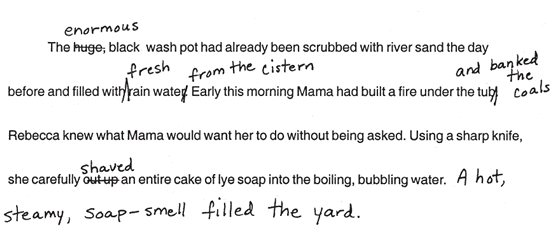 The number one mistake most young writers make is to write a rough draft, correct the spelling and punctuation, and think they’re done. They’ve missed the most important step of all, revising.
The number one mistake most young writers make is to write a rough draft, correct the spelling and punctuation, and think they’re done. They’ve missed the most important step of all, revising.
When you write your first rough draft, you’re just getting your thoughts down on paper. Your rough draft might be pretty good, but the best writing of all comes with revision. When kids read great books and stories by their favorite authors, they seldom stop to think that authors revise over and over and over — sometimes more than 50 times — so they can make sure their manuscripts are the best they can possibly be. The result of their revision is writing so detailed, so smooth, so fascinating, that we want to read all the way to the very end.
Revision means improving your writing in big ways: adding more information, more supporting details, answering unanswered questions, or replacing ordinary, boring words with sizzling vocabulary. Revision is not correcting spelling, neatness, or adding punctuation. Those things are taken care of in the editing process. Editing comes after you have revised several times.
Try this. After you’ve written your rough draft, read and reread it several times. Look for areas that need explanation or improvement. Don’t be afraid to mark, cross out, add words to the margins, etc.
The following is an example of revision. After writing a rough draft of a story about her grandmother’s childhood, the author read through it carefully. Realizing she could improve the language, she changed a few ordinary words to better ones. She also added information that would help readers form clear, mental pictures of an old-fashioned laundry day.


